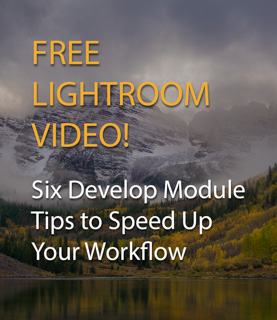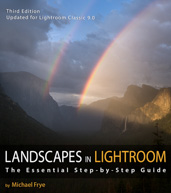Announcements
by Michael Frye | Jan 9, 2014 | Announcements
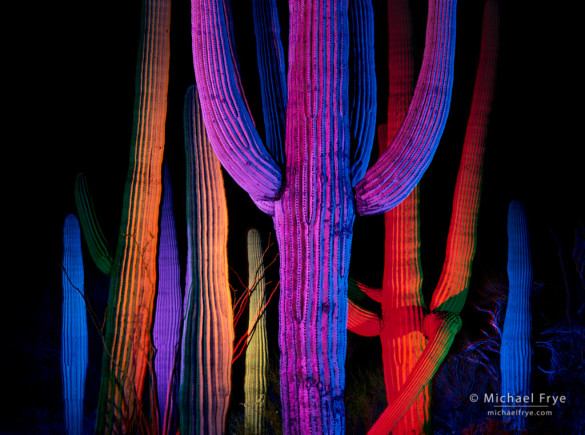
Saguaro cacti at night, Saguaro NP, AZ, USA
Last month Jim Harmer at Improve Photography interviewed me for his popular podcast, and that interview is now live. You can listen to the podcast directly on Jim’s site, or find it in iTunes.
One of the topics we discussed is creative ruts, and how to get out of them. I told the story of how I got out of such a rut in the early ’90s by experimenting with different subjects, techniques, and equipment. I used flash for the first time, which led me to trying flash at night, and eventually to my series of colorful, surreal, nighttime landscapes. The photograph above is perhaps the most recognizable image from that series, but you can see more examples here. (If you click on the thumbnails you’ll find descriptions of how each photograph was made.)
(more…)
by Michael Frye | Jan 8, 2014 | Announcements
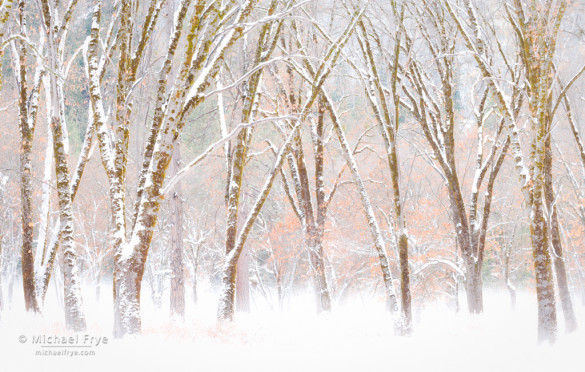
One of my top ten images: Snowy black oaks, late autumn, Yosemite NP, CA, USA
Part of the reason for putting together my top ten photographs of the year was to submit the collection to Jim Goldstein’s blog project – a collection featuring the top images of 2013 from a wide range of photographers. He had a tremendous response this year, with over 300 submissions. If you’re looking for some inspiration, or just want to see some beautiful photography, this is a great list to peruse. I haven’t seen everything yet, so this is by no means a comprehensive selection, but here are some entries that caught my eye and feature some excellent work:
(more…)
by Michael Frye | Jan 4, 2014 | Announcements
The votes are all in and counted, and here are my top ten photographs of 2013!
We had truly an amazing response this year: 396 people looked through my initial selection of 49 images and posted their picks here on the blog, Facebook, Google+, Twitter, and by email. A big thank you to everyone who took the time to look through these photographs and voice your opinions! I also really appreciate all the kind words expressed along with the votes. I wish I could respond to every comment, but please know that I’ve read them all and am very grateful for all your support. And last but not least, many thanks to my wonderful assistant Claudia who tallied all those votes!
To express our gratitude to all of you we’ve decided to give away another print to one of the voters. We assigned each person who voted a number, and used a random number generator to pick the recipient. And the winner is… Judy Heiser! Judy will receive a signed, numbered, matted 16×20 print of her choice from among the 49 original selections. Congratulations Judy!
So here’s the list of the ten images which received the most picks, and the number of votes they each received:
(more…)
by Michael Frye | Jan 3, 2014 | Announcements
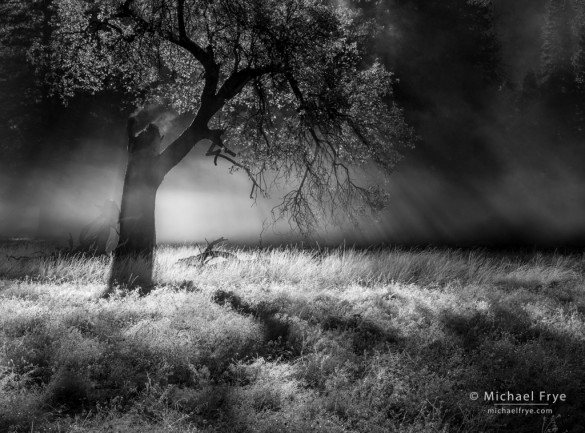
41. Mist, sunlight, and a California black oak, Yosemite
Just a reminder that if you want to vote for your favorite images of mine from 2013 the deadline is midnight tonight, Pacific time. And to all of you who have already voted – thank you very much!
— Michael Frye
by Michael Frye | Jan 1, 2014 | Announcements
Happy New Year! I hope you’ve recovered from your New Year’s Eve celebrations. 😉
Like champagne, Times Square, and Auld Lang Syne, it’s become a New Year’s tradition on this blog to pick out my best images from the past year, and once again I’m inviting you to help make these difficult choices. I’ve posted 49 of my best photographs from 2013 below, in chronological order. After you look through these please post a comment listing your ten favorites. (Click on the images to see them larger.) Once the votes are in I’ll put the top ten on this blog, and submit the finalists to Jim Goldstein’s blog project, where he’ll be showcasing the best images of the year from over 100 photographers. The voting deadline is Friday, January 3rd, at midnight Pacific time.
As always, I reserve the right to override the votes if one of my favorites gets panned. But I have yet to exercise this power — the last three years I went with the votes because, well, we’re all better at judging other people’s photographs than our own.
Thanks for your input — I appreciate your help!
—Michael Frye
(more…)
by Michael Frye | Dec 31, 2013 | Announcements
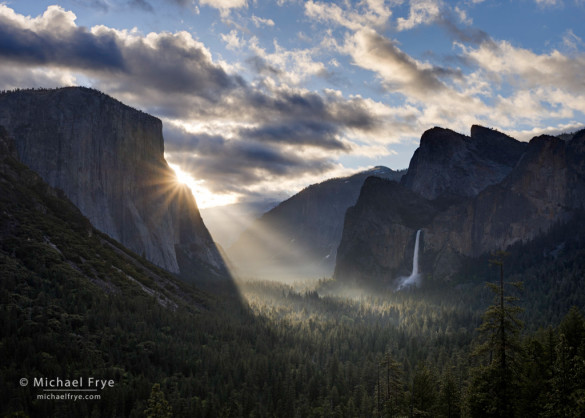
Sunbeams from Tunnel View, spring, Yosemite NP, CA, USA
Happy New Year everyone! To all my readers, thank you so much for your support during the past year. Your participation makes writing this blog fun. I have lots of exciting plans for this blog, and look forward to another great year in 2014!
And don’t forget, tomorrow I’ll be posting the nominees for my best photos of 2013, and you’ll get a chance to vote for your favorites and help me pick the top ten. The image above was the top vote-getter from two years ago.
— Michael Frye
(more…)





